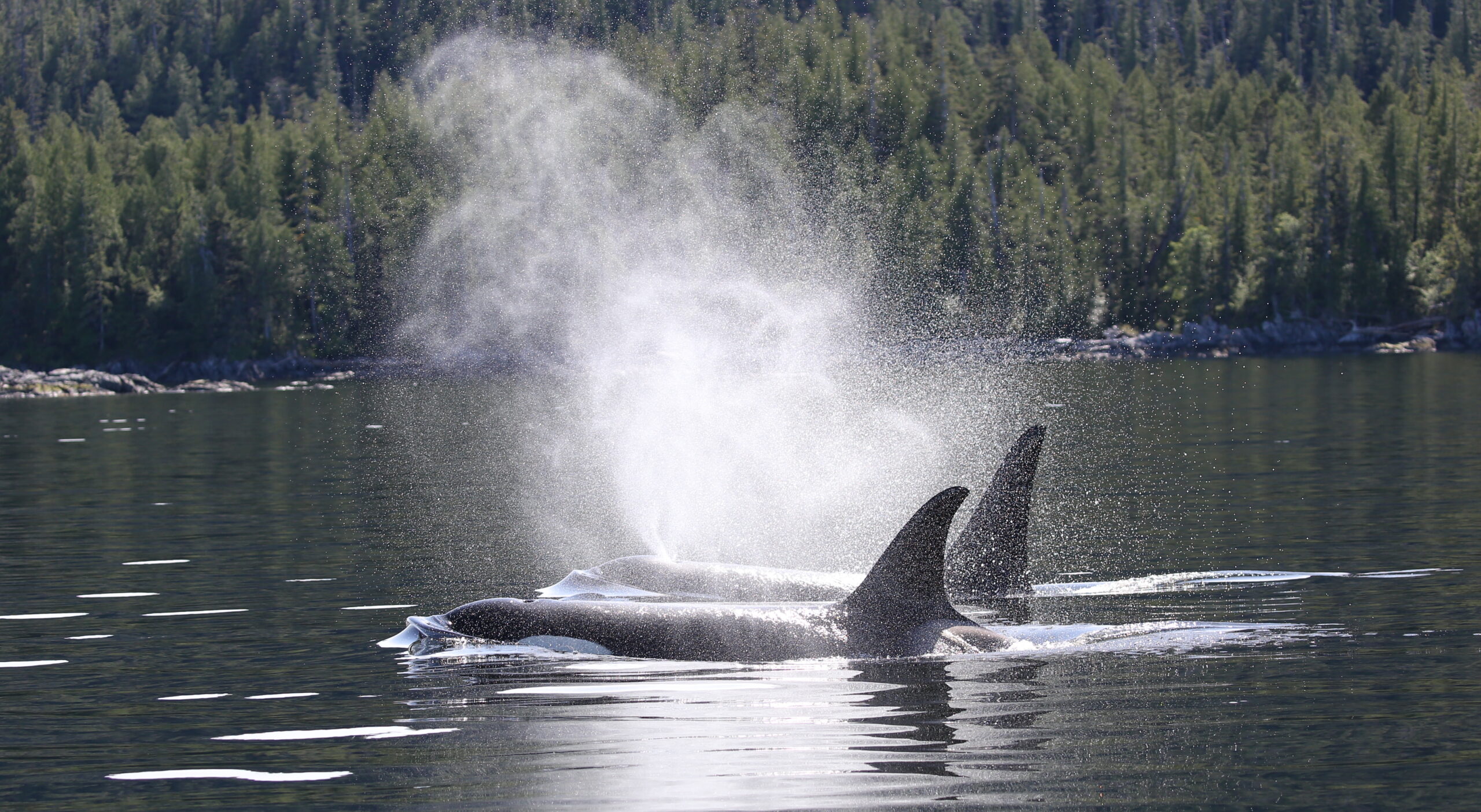Arriving with Whales
We arrived cold, wet and tired. It was a 4-hour trip in our open boat from Prince Rupert to our remote whale research station located within the Great Bear Rainforest of northern British Columbia. We had experienced every type of weather from flat calm to wind squalls, to a wall of rain that would not stop. The boat was fully loaded with our supplies for the season, with little room for us to move. Even the dogs were cold, one being a Siberian husky (Sasha), who even let our rumbustious younger dog (Bear) snuggle into her fur for warmth. He was cold and she was too tired to care, something that would never happen at home. To finally see the station enticed a second wind giving us enough energy to unload the mountain of equipment off the boat and up the rocks to the station.
For the first few days we were busy getting the station ready for the arrival of Joel our hydrophone engineer and Ben, our acoustic software genius! The hydrophones are core to our research goals. Each hydrophone transmits the entire underwater soundscape to the lab and enables us to listen 24/7 to the communication of all whale species. This has led to the discovery of the acoustic traditions and songs of orca, humpback, and fin whales and how important sound is to the continued health and recovery of these remarkable species.

Resident Orca, mother and son. Photo ©Janie Wray
The other aspect of our research includes documenting the identification of each whale, social and feeding behavior and how this relates to habitat use. We are piecing together the puzzle of whale behavior, communication and how they learn from each other through dedicated surveys, both from land and marine vessel surveys. BC Whales research station was built in core whale habitat over 20 years ago. There are many days we do not even need to leave the deck of the lab as many whales will pass by just meters from shore. This supports our ability to document who they are and their behavior without having an impact on their daily lives. This includes scheduled land-based scans and drone surveys.
Drones have truly opened our minds regarding how whales interact with each other from a bird’s eye view. We now have a better understanding of whale relationships, foraging techniques like group bubble net feeding, travel patterns and body health. One startling realization is that both humpback and fin whales will travel, very slowly, just below the surface. Though we can see them with the drone, we cannot see them from the boat. They can travel like this for long periods of time which puts them at greater risk of a vessel strike. We have also documented scars on their bodies, both from past vessel strikes and entanglements in fishing gear. From these results we are working on mitigation measures to introduce slow down zones in known whale hotspots and have developed an app and data base so people can easily report if they see a whale that is entangled or has been struck by a boat. Another drone project we are working on is collecting whale blow for DNA samples by flying the drone directly through the blow of a whale, which is later analysed in the lab to determine the population structure of whales within BC.
The humpback whales we have known for decades are beginning to arrive back to our region after the long migration from either Mexico or Hawaii, hopefully a few with new calves! Fin whales have rebounded in this region over the last decade, and we are now beginning to recognize familiar individuals from year to year. Orca calls will soon be echoing over the hydrophones, there will be very little sleep over the next 6 months as we dive into the research and wonder of whales!
